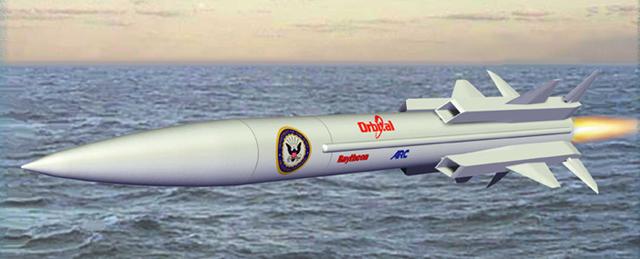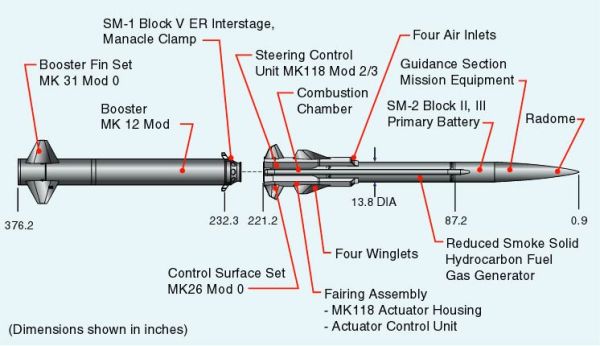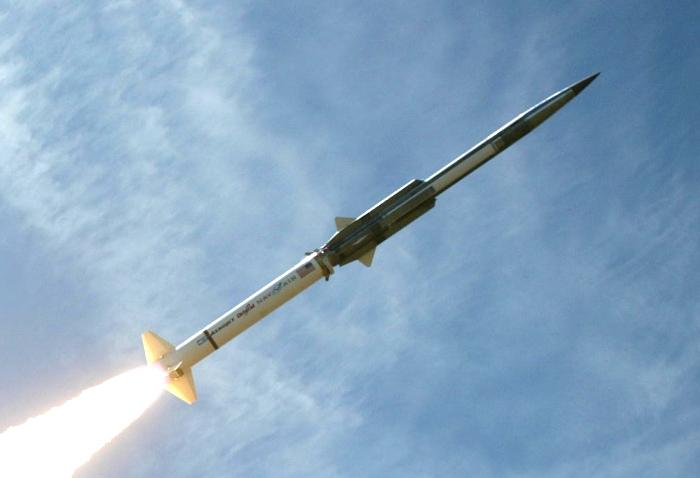Orbital Sciences GQM-163 Coyote
Following the cancellation of the AQM-127 SLAT (Supersonic Low-Altitude Target) in 1991, the U.S. Navy had to continue its quest for a replacement for the aging MQM-8 Vandal targets in the role of anti-ship cruise missile threat simulator. In the late 1990s, the Navy evaluated the Boeing/Zvezda-Strela MA-31 (a derivative of Zvezda's Kh-31 (AS-17 Krypton) anti-ship missile) as an interim SSST (Supersonic Sea-Skimming Target). However, the MA-31 was not selected for large scale production, and the Navy opted for the procurement of a new SSST instead. In June 2000, Orbital Sciences Corp. (OSC) was awarded a contract for development of the GQM-163A Coyote non-recoverable target vehicle.
 |
| Image: Orbital Sciences |
| GQM-163A |
The GQM-163A is launched from the ground with the help of a Hercules MK 70 rocket booster (left over from obsolete RIM-67 Standard ER missiles). The MK 70 is externally identical to the older MK 12 booster of the original specification. The sustainer propulsion system consists of an Atlantic Research Corporation (now Aerojet) MARC-R-282 solid-fueled ducted rocket/ramjet engine, which can propel the Coyote to speeds of up to Mach 2.8 at sea level. In the terminal approach phase, the GQM-163A will fly at Mach 2.5 at 5 m (16 ft) altitude. To save costs, the missile's flight control avionics and its front end structure are taken from the AQM-37D target.
 |
| Image: Orbital Sciences |
| GQM-163A |
The initial plans called for production of six GQM-163A SSST test vehicles. Originally, flight tests were to begin in spring 2003, but the program has apparently suffered significant delays. The first flight of a GQM-163A finally occurred in May 2004.
 |
| Photo: Orbital Sciences |
| GQM-163A |
Flight testing of the Coyote continued through 2004, and was successfully concluded in April 2005. As of March 2007, OSC has received production contracts for at least 39 GGM-163A vehicles, and the system is in operational service with the Naval Air Warfare Center (NAWC) in Point Mugu. At one time, a total purchase of 90 SSSTs has been planned by the U.S. Navy.
Specifications
Note: Data given by several sources show slight variations. Figures given below may therefore be inaccurate!
Data for GQM-163A:
| Length | 5.60 m (18 ft 4.3 in) (without booster) 9.53 m (31 ft 3.3 in) (incl. booster) |
| Diameter | 35 cm (13.8 in); booster: 46 cm (18 in) |
| Weight | ? |
| Speed | Mach 2.8 |
| Range | 110 km (60 nm) |
| Propulsion | Booster: Hercules MK 70 solid-fueled rocket Sustainer: Aerojet MARC-R-282 solid-fueled ducted rocket/ramjet |
Main Sources
Back to Current Designations Of U.S. Unmanned Military Aerospace Vehicles
Back to Directory of U.S. Military Rockets and Missiles
Last Updated: 30 March 2007